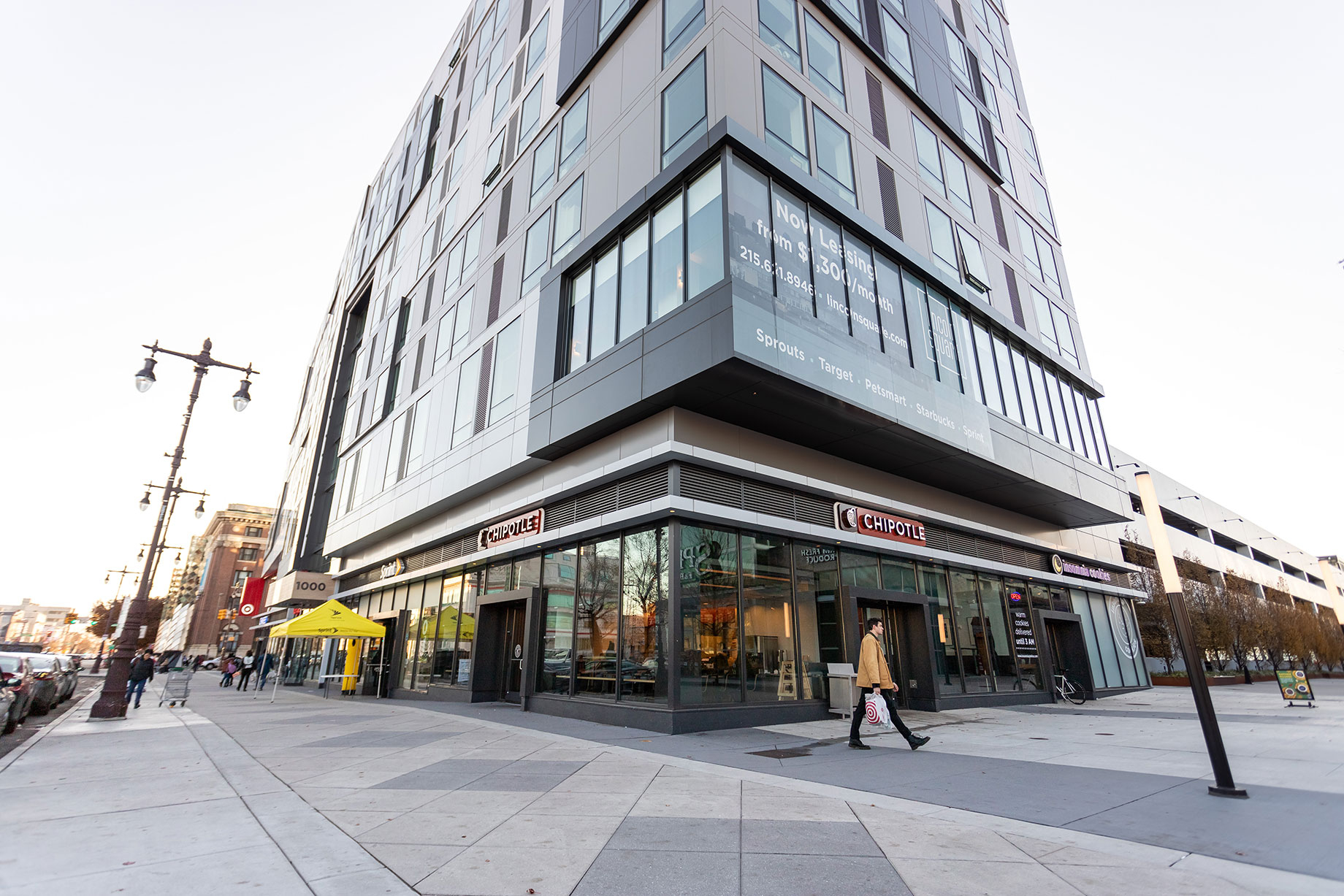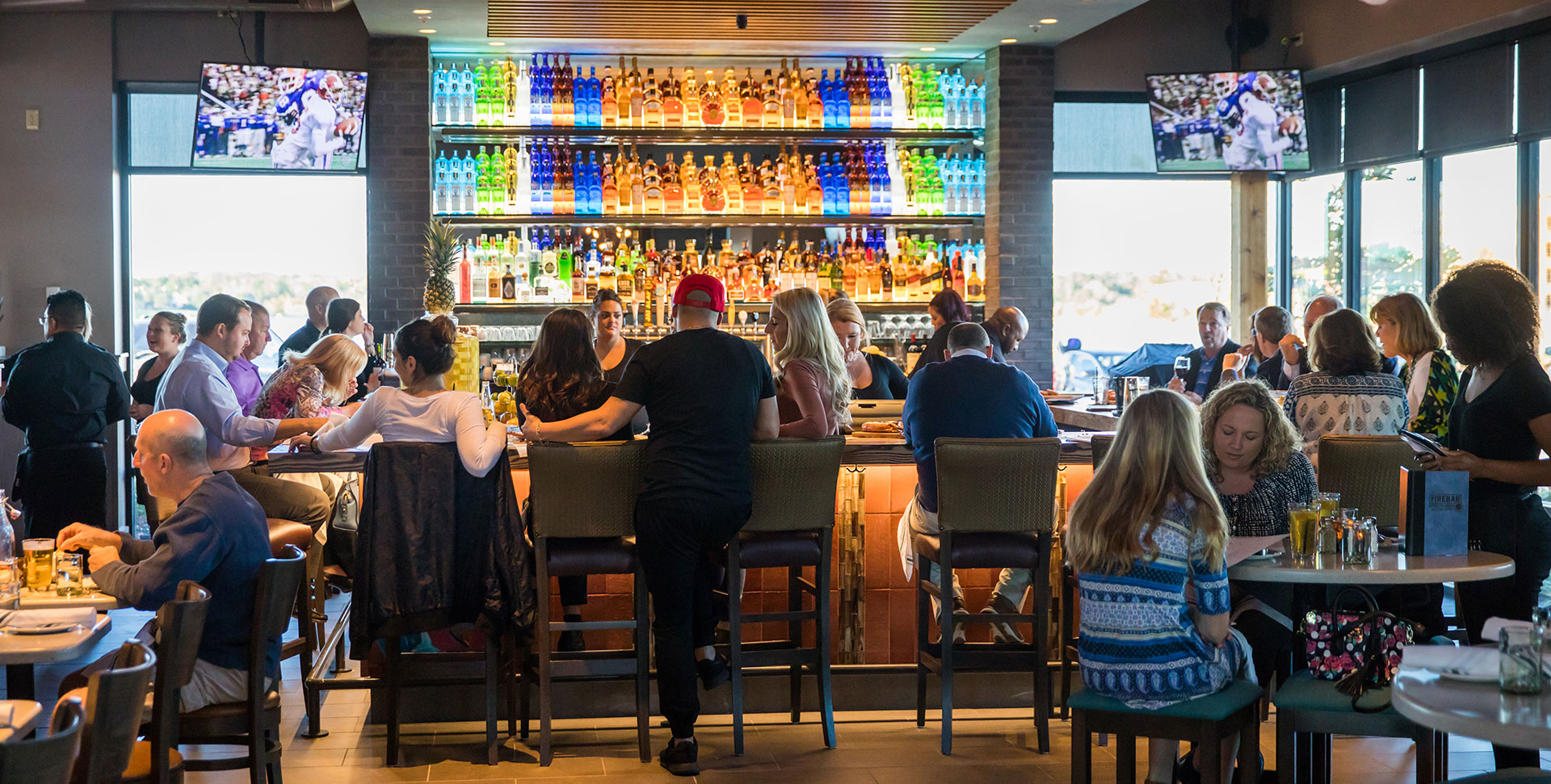American restaurants offer something for everyone, from Krispy Kreme’s sugar-glazed doughnuts to Kale Me Crazy’s gluten-free açaí bowl with goji berries and hemp seeds.
This is part of the reason the sector will keep growing this year, according to Hudson Riehle, the National Restaurant Association’s senior vice president of research. “Over 90 percent of American adults report they enjoy going to restaurants,” said Riehle. “That’s a level which is tough to achieve in any survey on any topic.” It is also great news for landlords with space for lease.
Based on the association’s projections, the 2019 sales tally for roughly 1 million U.S. restaurants will amount to a record $863 billion, a 4 percent increase over 2018. Typically, net growth in the number of units averages between 1 and 1.2 percent, Riehle says. “An additional 10,000 locations come online each year, so to generate that net increase, about 60,000 new sites will open, and 50,000 will shutter. The industry remains extremely competitive.” Craft breweries, “eatertainment,” chef-driven restaurants and fast-casual giants continue to lease more space.

“After a landlord does a Chipotle deal, it can drive up rents at the entire shopping center,” R.J. Brunelli & Co.’s Danielle Brunelli said of the New Jersey market. Pictured here is the Chipotle at Kimco Realty’s Lincoln Square, in Philadelphia
But the best operators are finicky. Top chains scrutinize each new location, expertsssay, and C-suite executives now sign off on all leases, rather than leaving that to their real estate committees. Given high shopping center occupancy rates and a dearth of new construction, restaurants are still not expanding as quickly as they were before the Great Recession, Riehle notes. “It’s that moderate growth environment that we see continuing into 2020,” he said.
From 2014 to 2018, the top 500 chains on research firm Technomic’s listing boosted their aggregate annual sales by some 3.8 percent, though unit growth was more muted. That top 500 added on only 1,569 units in all of 2018, bringing the aggregate unit count to 228,437. Fast-food chains dominated the rankings, as usual, and fast-casual brands followed closely behind.
“Fast food is ... more in and out, so customers are less likely to stay ... and shop”
The dynamics in New Jersey’s better markets illustrate how a confluence of factors can limit restaurant expansion, observes Danielle R. Brunelli, president of R.J. Brunelli & Co., an Old Bridge, N.J.–based retail brokerage. To be sure, landlords can score windfalls in these areas by leasing to popular chains. In fact, restaurants tend to pay the highest rents. Smaller restaurants are grossing $1.5 million to $2.5 million annually, according to Brunelli, and New Jersey–area Panera Bread units reportedly average about $2.8 million. Likewise, Chipotle Mexican Grill can draw enough traffic to create an outsized ripple effect at a property. “After a landlord does a Chipotle deal, it can drive up rents at the entire shopping center,” she said.
But fast-casual chains demand high-visibility pads and end caps, and they increasingly consider access to drive-through lanes as being critical. Some are even vacating buildings that lack these features. “Panera and Chipotle are almost becoming more quick-casual now,” Brunelli said. “They are really focusing on drive-throughs.” (Chipotle said in its 2018 annual report that it planned to open fewer stores in 2019 — between 140 and 155 in total — owing to challenges in finding the right sites. The chain operates roughly 2,500 restaurants.)
Opportunities in anchorless strips
Restaurants do indeed have drawing power, and thus more developers use them as stand-ins for traditional large-format anchor stores. This is partly because fast-casual chains have responded positively to the “anchorless strips” strategy, asserts Jeff Green, a partner at national retail advisory firm Hoffman Strategy Group. “It’s a shopping center category that doesn’t get enough credit,” Green said. “It’s all about food in the aggregate. You could have, let’s say, four fast-casual and maybe one fast-food restaurant, along with service tenants.”
Retrofitting older centers into anchorless strips, however, is often a nonstarter, says Green. Meeting the site criteria of expanding chains can be impossible for older centers. “If Cafe Rio says they want 3,500 square feet, they want 3,500 square feet — not 3,000 and not 4,000,” Green said. “They’re being more specific because they can.” Moreover, demolishing a lagging pad restaurant to make way for a better operator typically doesn’t pencil, argues Green, and top chains do not see moving into vacant outparcel restaurants as being much of an option. “We can all recognize that it used to be a Pizza Hut,” he said.
Opportunities in mixed-use
Restaurants are leasing more space across Kimco Realty’s 409-property portfolio, including at new and redeveloped mixed-use centers like Lincoln Square, in Philadelphia. For maximum drawing power, Kimco looks for restaurants that offer service and quality, as well as “something unique to the market that isn’t typically found in your standard fast-casual or sit-down dining concept,” according to Kimco COO David Jamieson. Restaurants’ total share of leases in Kimco’s portfolio has increased by 12.1 percent since the end of 2016, according to Jennifer Maisch, the firm’s director of corporate communications. During that same three years, restaurants’ share of gross leasable area in the Kimco portfolio grew by 13.6 percent, and the annualized base rent rose by 12.5 percent. The REIT’s portfolio now includes approximately 1,800 restaurants, about 100 of them new entrants from last year.
“The restaurant business is notorious for high turnover, but experts say lack of demand is not generally the issue”
At its mixed-use Dania Pointe project, in Dania Beach, Fla., Kimco signed Cooper’s Hawk Winery & Restaurants, Firebirds Wood Fired Grill and Saito’s Japanese Steakhouse, to name a few. The firm is adding on about 417,000 square feet of retail, entertainment and dining to the 102-acre project, at a cost of some $256 million. “Firebirds was one of the first to open for phase two,” Jamieson said. “It is creating a lot of buzz and draw and is doing really well.” In January Kimco announced that Spirit Airlines had bought nine acres at Dania Pointe to build a $250 million headquarters and training center. The influx of office workers should help ramp up restaurant productivity at the property further, he says. “Several thousand employees will be rotating in and out [of the headquarters and training center] on a regular basis.” Along the same lines, this year Amazon will start building two 22-floor office towers near Kimco’s Pentagon Centre, as part of Amazon HQ2 — a massive, multibuilding project slated to bring thousands of tech workers to Northern Virginia (see page 44). “We have always seen office in general as a great feeder for our on-site restaurants,” Jamieson said.
Opportunities at the mall
For decades, shoppers went to the mall to eat Sbarro or Burger King off plastic trays. Most malls offered just one or two sit-down restaurants — Bennigan’s, perhaps, or Ruby Tuesday. These days, the script has flipped, especially at top-performing malls, says Kevin Cody, a senior consultant at CoStar Group. “We have seen sit-down restaurants be the key driver for malls,” he said. “The space occupied at malls by fast-food types of retailers, those that would be located in kiosks or the food court, continues to shrink.” According to CoStar’s mall database, space occupied by sit-down restaurants has grown by 1.8 million square feet since 2015; fast-food restaurants now occupy about 1.1 million fewer square feet.
California Pizza Kitchen, Olive Garden, P.F. Chang’s and The Cheesecake Factory are some of the fastest-growing sit-down restaurants at malls, CoStar says. Sports bars Buffalo Wild Wings and Yard House also have seen strong growth. According to Technomic’s most recent data set, Buffalo Wild Wings racked up sales of $3.8 billion across 1,208 locations in 2018. Sit-down restaurants appeal to mall landlords because they increase dwell time, says Alexander Levy, a CoStar consultant. “Fast-food is quicker and more in and out, so customers are less likely to stay for a longer period and shop,” he said.

Firebirds Wood Fired Grill opened in the second phase of Kimco Realty’s Dania Pointe mixed-use development, in Florida. A coming Spirit Airlines headquarters and training center there promises to make the restaurant even more productive
But as Green sees it, older sit-down restaurants like Rainforest Cafe, Red Robin and TGI Fridays are underperforming and look tired. “There are just too many new concepts coming out that appeal to younger people,” he said. The Cheesecake Factory, for one, aims to stay current: Last year the publicly traded company acquired Phoenix-based Fox Restaurant Concepts, which was founded by award-winning restaurateur Sam Fox, whose 50-plus restaurants include Blanco, Flower Child, The Arrogant Butcher, The Henry and Zinburger. The average annual unit volume for a Fox restaurant, according to Cheesecake Factory, is $7 million.
Opportunities in backfilling
Backfilling space with restaurants, including large-format concepts that combine food and entertainment, will continue in the year ahead, says Robin Trantham, a CoStar consultant. “We do expect big-box store closures to continue this year,” Trantham said, “especially with companies like Kohl’s and Gap becoming riskier and taking on more debt.”
In other cases, landlords will need to replace failed restaurants with operators that are more vibrant. The restaurant business is notorious for high turnover, but experts say lack of demand is not generally the issue. Staci Spangler and Megan McCraney, landlord reps with The Shopping Center Group, report strong restaurant demand at properties across Atlanta, and they see plenty of opportunities. “Just because it can be such an expensive build-out, restaurateurs don’t always love to take on first-generation space,” Spangler said. “We’re finding that second-generation restaurant space is an extremely hot commodity in town and in some of the suburban markets as well.”
And after poring through government stats and quizzing experts, the National Restaurant Association is sanguine about the restaurant business as well: Its 10-year outlook predicts that U.S. restaurant sales will top $1.2 trillion by 2030.
Six leasing tips based on restaurant trends
Read moreBy Joel Groover
Contributor, Commerce + Communities Today


